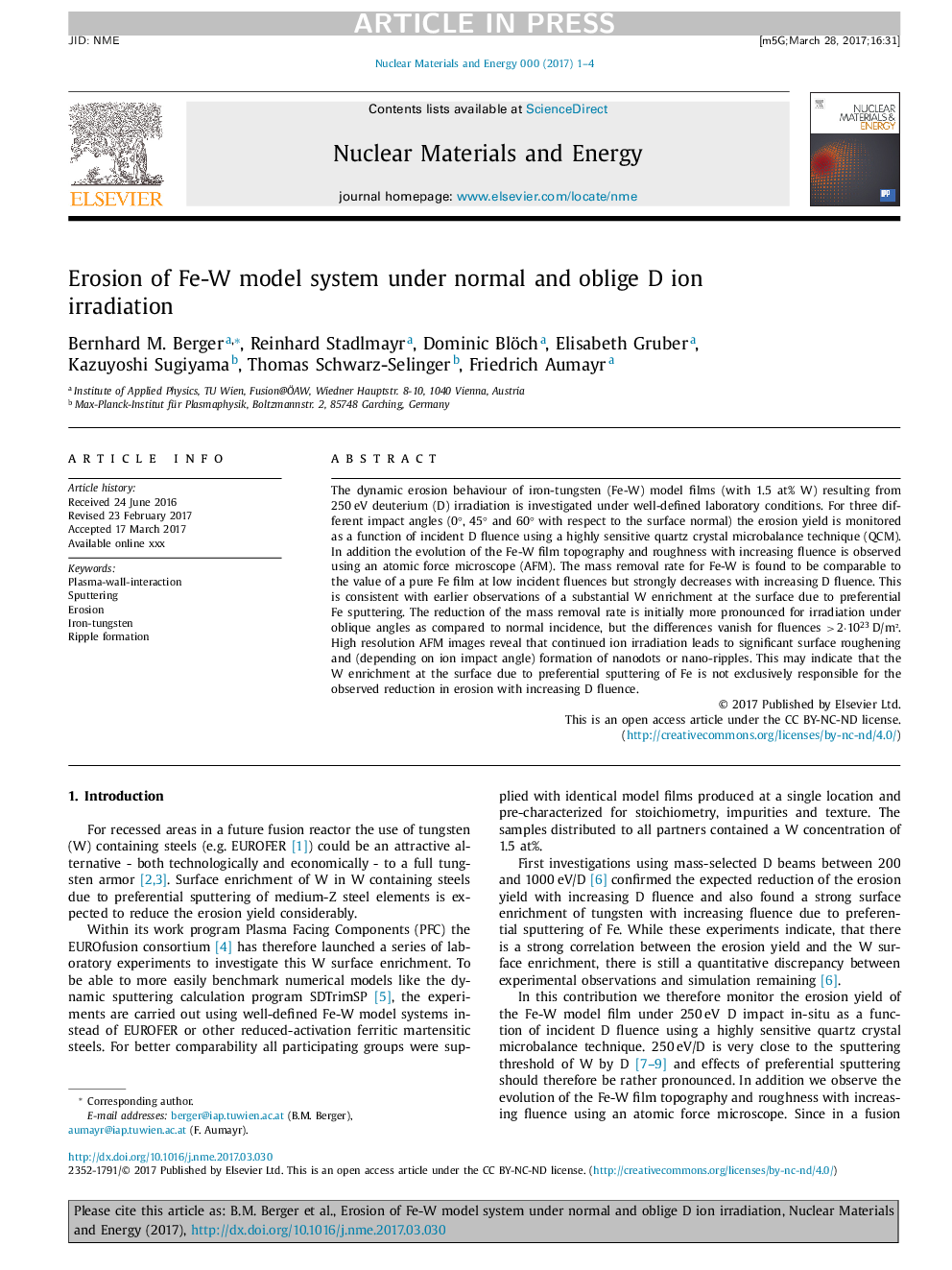| Article ID | Journal | Published Year | Pages | File Type |
|---|---|---|---|---|
| 7987517 | Nuclear Materials and Energy | 2017 | 4 Pages |
Abstract
The dynamic erosion behaviour of iron-tungsten (Fe-W) model films (with 1.5 at% W) resulting from 250 eV deuterium (D) irradiation is investigated under well-defined laboratory conditions. For three different impact angles (0°, 45° and 60° with respect to the surface normal) the erosion yield is monitored as a function of incident D fluence using a highly sensitive quartz crystal microbalance technique (QCM). In addition the evolution of the Fe-W film topography and roughness with increasing fluence is observed using an atomic force microscope (AFM). The mass removal rate for Fe-W is found to be comparable to the value of a pure Fe film at low incident fluences but strongly decreases with increasing D fluence. This is consistent with earlier observations of a substantial W enrichment at the surface due to preferential Fe sputtering. The reduction of the mass removal rate is initially more pronounced for irradiation under oblique angles as compared to normal incidence, but the differences vanish for fluences >â2·1023 D/m². High resolution AFM images reveal that continued ion irradiation leads to significant surface roughening and (depending on ion impact angle) formation of nanodots or nano-ripples. This may indicate that the W enrichment at the surface due to preferential sputtering of Fe is not exclusively responsible for the observed reduction in erosion with increasing D fluence.
Related Topics
Physical Sciences and Engineering
Energy
Nuclear Energy and Engineering
Authors
Bernhard M. Berger, Reinhard Stadlmayr, Dominic Blöch, Elisabeth Gruber, Kazuyoshi Sugiyama, Thomas Schwarz-Selinger, Friedrich Aumayr,
